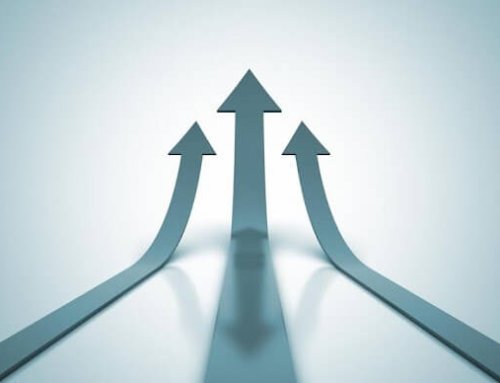
Before business prospects make a purchasing decision, they embark on a business-to-business (B2B) “buyer’s journey” that places them squarely into the seller’s “buyer funnel.” For many years, this journey was often simple and of short duration; you might say that purchasing decisions were more impulsive, with buyers often trusting their gut. But then things began to change, slowly at first and then more rapidly until the entire B2B buyer’s journey paradigm shifted. For sellers, this new B2B funnel is changing the way customers are targeted, connections are made and maintained, and sales are converted. What’s changed? How does the buyer act today? And what can sellers do to adapt and gain a competitive advantage moving forward?
Stages of the B2B Buyer’s Journey
Even though the nature, depth, breadth, and speed of the buyer’s journey have evolved, one thing hasn’t changed: it is a “process” with predictable stages. Those stages include awareness, consideration, and decision. While the buyer may navigate these stages differently today than in the past, the movement from one stage to the next remains part of the process.
In the awareness stage, for example, the prospective buyer recognizes a problem or need that normally requires an external solution. In addition to becoming aware of the problem or need (sometimes called a “pain point”), the buyer also begins to seek and gather information on solution providers and alternatives.
In the consideration stage, the buyer turns to available sales and marketing information to become better informed before making the purchase.
And in the decision stage, buyers review everything they’ve learned about viable solutions to their need. They consider pros and cons, features and benefits, and alternatives. Armed with all this information (and yes, what their gut tells them, too), they are poised to make a decision.
So, What’s Changed?
In 2013, GE Capital Retail Bank’s Major Purchase Shopper Study found that 81% of consumers extensively researched and compared prices online. According to the B2C study, that was a huge jump from the 20% of consumers doing their online due diligence only the year before. Six years later, the percentage had risen to 85%, per Cleveland-based eCommerce agency Transaction, citing a 2019 report from dropshipping facilitator Oberlo.
Keep two things in mind: 1) These figures reflect general consumer behaviors in the B2C sphere, and 2) this was the last “normal” year before the COVID-19 pandemic.
So, what about now? And what about the B2B buyer’s preferences and behaviors?
How to Sell More Effectively in the New B2B World
Clearly, digital influence on B2B buyer behavior is also here to stay, as the pandemic has solidified this emerging trend. What’s more, these trends appear to hold true and be irreversible regardless of the complexity or price of B2B purchases. In their September 2020 Future of Sales Research report, Connecticut-based research and consulting firm Gartner predicted that 80% of large B2B sales interactions will be digital by 2025.
Additional Gartner research finds that B2B buyers engaged in the buyer funnel spend only 17% of their time meeting with potential solution providers. When multiple providers vie for the customer’s business, each seller will only get a small amount of face-time with the prospect. This “new normal” has sales organizations facing an “adapt or die” mentality and changing their sales strategies and processes. For example, Forrester, a customer engagement-focused research and advisory company reports that 40% of B2B reps plan to modify their tactics to adapt to remote selling activities. Why? Perhaps two reasons. First, Forrester predicts that 80% of B2B sales will be done digitally and remotely. And second, 38% of study respondents said that in-person sales meetings had decreased in value.
Is simply ramping up a digital sales presence enough to gain a competitive advantage in the B2B buyer funnel? Probably not. At best, it will empower you to compete on a level playing field. But there is a way to further enhance the buyer’s experience and gain the upper hand. Consider this: a recent LinkedIn study found that 88% of the salespeople they do business with are considered “trusted advisors.” This points out the importance of adding value to the B2B relationship and buying experience. In fact, another Forrester study found that 77% of B2B buyers want sellers to “help me learn something new,” and that three in four B2B prospects want sellers to “show how their products and services impact my business.”
It’s clear that the successful sales organization of the future must do more than merely identify their ideal customers and their pain points. They must do more than “lean in” to the digital experience. Sellers must provide real value as trusted advisors who can help buyers improve their businesses – and their bottom lines.
Click here to download an infographic on what sellers should do to gain a competitive advantage in the new B2B buyer funnel.
_________________________
If you’d like to have a preliminary discussion about the sales challenges you are facing, please feel welcome to contact me at Chris @ Sales Growth Advisors or book a call through my Scheduling Tool.
I also invite you to follow me on LinkedIn to gain exposure to future article posts that will offer more valuable selling insights.
TAKE MY SALES AGILITY ASSESSMENT
Chris Tully
President | Sales Growth Advisors LLC
(Phone) 571-329-4343
(Email) crtully@salesgrowthadvisor.com
(Schedule) Here is my calendar link!
(Web) www.salesgrowthadvisor.com
(Blog) https://www.salesgrowthadvisor.com/insight/blog/






Leave A Comment